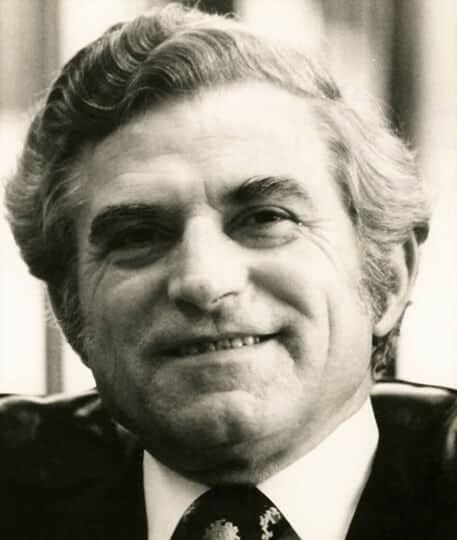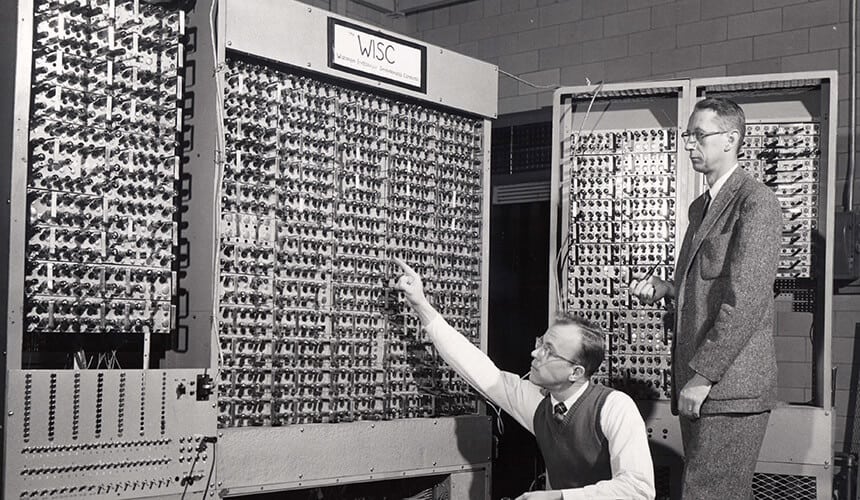Gene Amdahl
Amdahl Helped Launch the Computer Age
Gene Amdahl MS1949, PhD1952’s childhood lessons came in a one-room South Dakota school that lacked electricity.
From that beginning to an eye-catching UW graduate school stint and a fabled computer design career, Amdahl was a brilliant computer pioneer who helped usher in the computer age.
Amdahl came to the UW to study physics, but he quickly caught the attention of the electrical engineering faculty. These professors convinced him to change his dissertation topic and build a digital computer.
“I went to the library afterward. We didn’t have any books,” he recalled, noting that the only analog computers on campus were crude and unhelpful. “At that time, I thought any information on computers was classified, because they were all being done under government contracts. So I didn’t know anything about them. I’d read about them in a book called Giant Brains.”

Image courtesy of the UW Archives, #S17569.
He began designing the Wisconsin Integrally Synchronized Computer (WISC). It had about seven kilobytes of drum memory and was assembled using war-surplus vacuum tubes that Amdahl bought at a nearby air base.
The project gained media attention, and IBM officials came calling. IBM hired Amdahl and he became the highest-paid new graduate in the company’s history.
That investment paid off. Several years later, IBM unveiled the System/360 series, the most successful computer line in the firm’s history. Amdahl was the father of the new computer.
From The Park
S = 1/((1—P)+(P/N))
Source: Used by permission of copyright holder.
The product line was a family of compatible machines that allowed businesses to easily scale up to more powerful machines. Michael Flynn, a colleague of Amdahl’s, said it “set the design philosophy for computers for the next 50 years.”
Amdahl is also known for Amdahl’s Law, which predicts the theoretical maximum improvement in speed using multiple processors to handle a task.
He went on to found Amdahl Corporation, which made IBM-compatible machines and software and logged $200 million in annual revenue. Two other Amdahl firms never achieved similar success.
Amdahl died in 2015 at age 92, leaving an immense industry footprint. Dag Spicer, curator at the Computer History Museum, said Amdahl ranks atop his field.
“He’s always been right up there with Seymour Cray or Steve Wozniak,” Spicer said.
 48° F
48° F